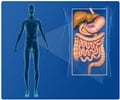A genetic signature for a severe, often painful food allergy - eosinophilic esophagitis has been discovered by researchers.

Interestingly, the dysregulated microRNA was reversible with steroid treatment, according to the study's senior investigator, Marc E. Rothenberg, MD, PhD, director of Allergy and Immunology and the Center for Eosinophilic Disorders at Cincinnati Children's. MicroRNAs are short segments of RNA that can regulate whether genetic messengers (mRNAs) are degraded or translated into protein.
"The identification of biomarkers specific to EoE is a significant advancement for both the diagnosis and treatment of the disease," explains Rothenberg. "The microRNA signature provides an opportunity for more precise analysis of esophageal biopsies."
Rothenberg said children with EoE now undergo anesthesia and invasive endoscopy to diagnose and monitor the allergy. The ability to determine the presence and status of EoE with a noninvasive method, such as blood test that measures microRNAs, would have a positive impact on individuals and families.
In the current study, investigators analyzed esophageal microRNA expression of patients with active EoE, steroid-induced EoE remission, patients with chronic (non-eosinophilic) esophagitis and of healthy individuals. Additionally, they assessed plasma microRNA expression of patients with active EoE, remission of EoE remission and of healthy individuals.
The researchers found that EoE was associated with 32 differentially regulated microRNAs and distinguishable from the non-eosinophilic forms of esophagitis (such as reflux disease). Esophageal eosinophil levels correlated significantly with expression of the most increased microRNAs, miR-21 and miR-223, and most decreased, miR-375. MiR-223 was also one of the most increased microRNAs in the plasma, along with miR-146a and miR-146b.
Advertisement
Only recently recognized as a distinct condition, the incidence of EoE has been increasing over the past 20 years, as have other allergies. Rothenberg and his laboratory team pioneered research showing EoE's reported incidence is estimated to be at least one in 1,000 people. Its hallmark is swelling and inflammation in the esophagus, accompanied by high levels of immune cells called eosinophils.
Advertisement
Source-Eurekalert














